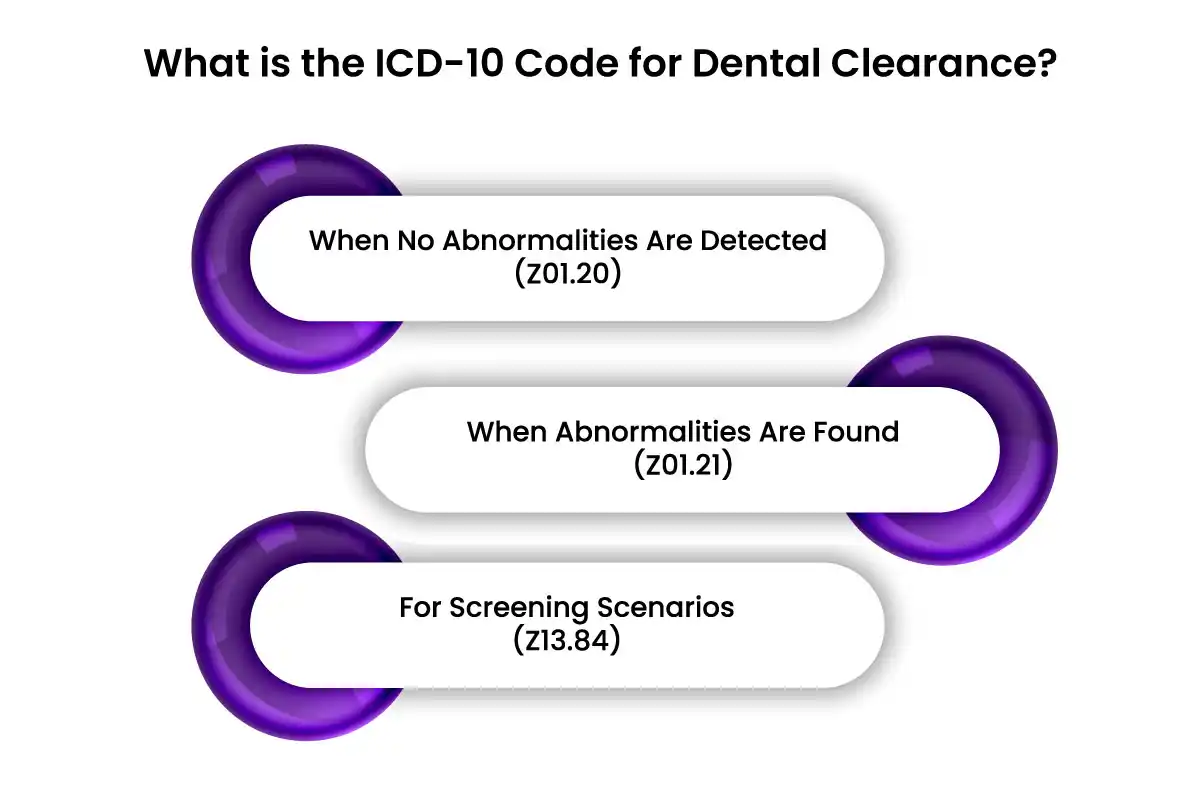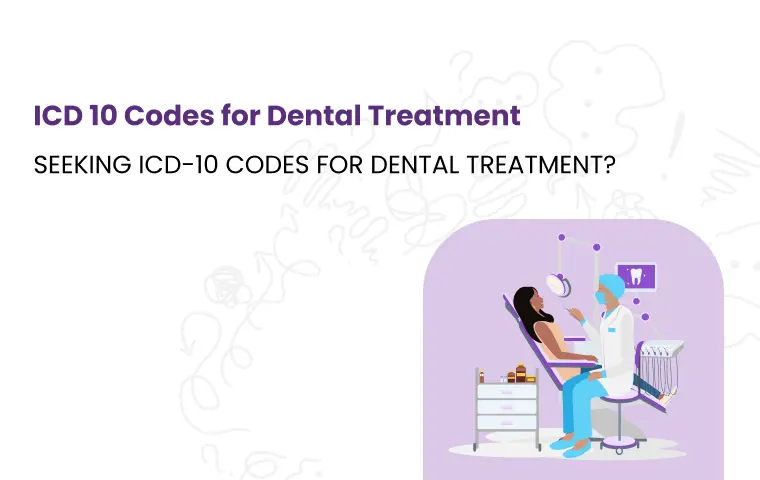In the world of dentistry, it's not just about fillings, cleanings, and root canals—it's also about codes. Dental treatment ICD-10 codes, to be precise. These seemingly complex combinations of letters and numbers are key for accurate billing, playing a critical role in everything from insurance claims and reimbursement to tracking patient data and improving overall care.
In this comprehensive guide, we'll break down the essentials of dental treatment ICD-10 codes in a way that's both easy to understand and incredibly useful. Whether you're a seasoned dentist, a budding dental hygienist, or a curious patient, we'll walk you through the why, what, and how of these codes. We'll cover everything from common codes for everyday procedures to tips for avoiding coding errors and staying up-to-date with the latest changes.
Do All Dental Claims Require ICD-10 Diagnosis Codes?
The answer to this question isn't a simple yes or no. Not all dental insurance carriers require ICD-10 diagnosis codes on claims. However, a growing number of insurers, including Medicaid dental programs, are mandating them. It's crucial to verify the specific requirements of each patient's insurance plan.
Some states may have regulations requiring the use of ICD-10 diagnosis codes for certain dental procedures or in specific situations, such as when a dental condition is linked to an underlying medical condition.
Certain complex dental procedures, such as those involving oral surgery or medically necessary treatments, are more likely to require diagnosis codes for proper documentation and reimbursement.
What is the ICD-10 Code for Dental Clearance?
The icd 10 code for the dental clearance depends entirely on the nature and findings of the exam itself.

When No Abnormalities Are Detected
Z01.20: This code is your go-to for routine checkups and cleanings where no abnormalities are detected. It signifies a preventive encounter for both examination and cleaning.
When Abnormalities Are Found
Z01.21: If the dental professional uncovers any issues during the examination, such as cavities, gum disease, or other oral health concerns, this code comes into play. It indicates that the examination and cleaning were conducted but with abnormal findings requiring further attention.
For Screening Scenarios
Z13.84: This code is reserved for screening scenarios in which a patient without specific symptoms is evaluated for potential dental problems. It's a proactive measure to identify issues early on.
List of Dental Diagnosis ICD-10 Codes
Dental professionals encounter a wide range of procedures in their daily practice. Here, we'll focus on the most frequently used ICD-10 codes for common dental treatments, simplifying your coding process and ensuring accurate documentation.
Erosion Of Teeth
Erosion of teeth would typically fall under the "Restorative Services" category within the ICD-10 coding system. It is classified under icd 10 code K03.2, signifies the gradual wearing away of tooth enamel due to exposure to acids.
Dental Abscess
The ICD-10 code for a dental abscess depends on the specific type and location of the abscess. Here are the most common codes:
K04.7: Periapical Abscess Without Sinus
This code indicates an abscess (a localized collection of pus) located at the tip of the tooth root (periapical). The abscess does not have a sinus tract (a channel through which pus drains).
K04.6 : Periapical Abscess With Sinus
Similar to K04.7, this code indicates a periapical abscess, but in this case, the abscess has formed a sinus tract. The sinus tract is a channel through which pus drains, often creating a small pimple-like bump on the gum near the affected tooth.
Dental Caries
Dental caries, also known as tooth decay or cavities, is the breakdown of teeth caused by acids made by bacteria. ICD 10 codes for dental caries are categorized as
K02.3: Arrested Dental Caries
This code indicates that the decay process in a tooth has stopped and is no longer progressing.
K02.5: Dental Caries on Pit and Fissure Surface
This code is a general code for cavities located in the pits and fissures (the grooves and depressions) of teeth.
K02.51: Dental Caries on Pit and Fissure Surface Limited to Enamel
This code is more specific, indicating that the decay is located in the pits and fissures of the tooth but has only affected the enamel (the outer layer of the tooth). This is considered an early stage of tooth decay.
K02.52: Dental Caries on Pit and Fissure Surface Penetrating into Dentin
This code indicates that the decay has progressed beyond the enamel and has reached the dentin (the layer beneath the enamel). This is considered a moderate stage of tooth decay.
K02.53: Dental Caries on Pit and Fissure Surface Penetrating into Pulp
This code indicates that the decay has reached the pulp (the innermost part of the tooth containing nerves and blood vessels). This is considered a severe stage of tooth decay and often requires root canal treatment.
K02.63: Dental Caries on Smooth Surface Penetrating into Pulp
Similar to K02.53, this code indicates that the decay has reached the pulp, but in this case, the decay started on a smooth surface of the tooth rather than in a pit or fissure.
K02.7: Dental Root Caries
This code indicates decay on the root of the tooth, which is usually exposed due to gum recession.
K02.9: Unspecified Dental Caries/ Dental Decay
This code is used when the specific location or severity of the dental caries is not specified.
Dental Injury
According to the American Academy of Professional Coders (AAPC), the ICD-10 code for a dental injury would depend on the specific type of injury. Here are some common codes:
-
S02.5XXA: Fracture of tooth (traumatic), initial encounter for closed fracture
-
S02.5XXD: Fracture of tooth (traumatic), subsequent encounter for fracture with routine healing
-
S03.2XXA: Dislocation of tooth, initial encounter
-
S03.2XXD: Dislocation of tooth, subsequent encounter
-
K03.81: Cracked tooth (this code is used for a crack that doesn't extend into the root)
Periodontitis
Periodontitis, also known as gum disease, is a common infection that damages the gums and bone that support your teeth
-
K05.2: Aggressive Periodontitis: Rapidly progressing form of gum disease, often affecting younger individuals.
-
K05.21: Aggressive Periodontitis, Localized: Primarily affects certain areas of the mouth.
-
K05.22: Aggressive Periodontitis, Generalized (Slight, Moderate, Severe): Affects most or all teeth, with varying degrees of severity.
-
K05.3: Chronic Periodontitis: The most common form of periodontitis, usually occurring in adults and progressing slowly.
-
K05.31: Chronic Periodontitis, Localized (Slight, Moderate, Severe): Affects specific areas, with varying severity.
-
K05.32: Chronic Periodontitis, Generalized (Slight, Moderate, Severe): Affects most or all teeth, with varying severity.
-
K05.4: Periodontitis: A general code used when the type of periodontitis is unspecified.
-
K05.5: Other Periodontal Diseases: Covers periodontal conditions not classified elsewhere, such as necrotizing periodontal disease or periodontal abscess.
-
K05.6: Unspecified Periodontal Disease: Used when there is insufficient information to assign a more specific code.
Documentation Guidelines for Dental Billing
To ensure accurate reimbursement and to avoid denial, it is necessary to follow all the below guidelines.
Legibility and Signatures
All dental records must be clear, easy to read, and signed by the provider using their full name and professional title.
Evaluations and Consultations
Thoroughly document all dental exams, whether complete, periodic, or limited in scope. Include details of any consultations or coordination with other medical professionals involved in the patient's care. Note the location where evaluations occurred, especially if different from the billing location.
Anesthesia and Medication
Specify the type of anesthesia used during any procedure. Record any unusual events or complications that occur during the anesthesia monitoring period. Document the total time the patient was under anesthesia. List all medications given to the patient, including dosage and time of administration. Describe any pain management measures prescribed after the procedure.
Radiographs and Imaging
Indicate the type of radiograph or imaging technique used. Describe the results of the imaging, including any findings or abnormalities.
Testing and Diagnostic Services
Document any tests or diagnostic procedures performed.
Treatment Details
Clearly identify the tooth or teeth treated using ADA and CMS standards (alpha for primary, numeric for permanent). Specify the tooth surface treated, if applicable. Note any missing teeth in the patient's permanent record. Describe the type of treatment provided, such as:
-
Treatment of caries (cavities)
-
Endodontic procedures (root canals)
-
Prosthetic services (crowns, bridges, dentures)
-
Preventive services (cleanings, sealants)
-
Treatment of lesions and other dental diseases
Literature and Clinical Evidence
Include references to relevant peer-reviewed literature, research studies, clinical guidelines, or accepted standards of care that support the medical necessity of the dental services provided. Provide clinical evidence demonstrating that the dental services resulted in significant improvements in the patient's clinical, quality, and safety outcomes related to the covered medical condition or procedure.
Advance Beneficiary Notice (ABN)
If there is uncertainty about Medicare coverage, issue a written ABN to the patient before providing the service. The ABN informs the patient that they may be financially responsible if Medicare denies coverage.
Final Words
Understanding and accurately applying ICD-10 codes is essential for both patient care and the financial health of your practice. We hope this guide has cleared you confusion about ICD 10 codes for dental treatment, so now you can confidently document treatments, submit claims, and ultimately, provide the best possible care for your patient.
If you're looking for expert assistance with dental billing services, consider partnering with HMS USA LLC. Their team of experienced professionals can help optimize your billing processes, maximize reimbursement, and ensure compliance with industry standards.
ABOUT AUTHOR

John wick
As a blog writer with years of experience in the healthcare industry, I have got what it takes to write well-researched content that adds value for the audience. I am a curious individual by nature, driven by passion and I translate that into my writings. I aspire to be among the leading content writers in the world.
